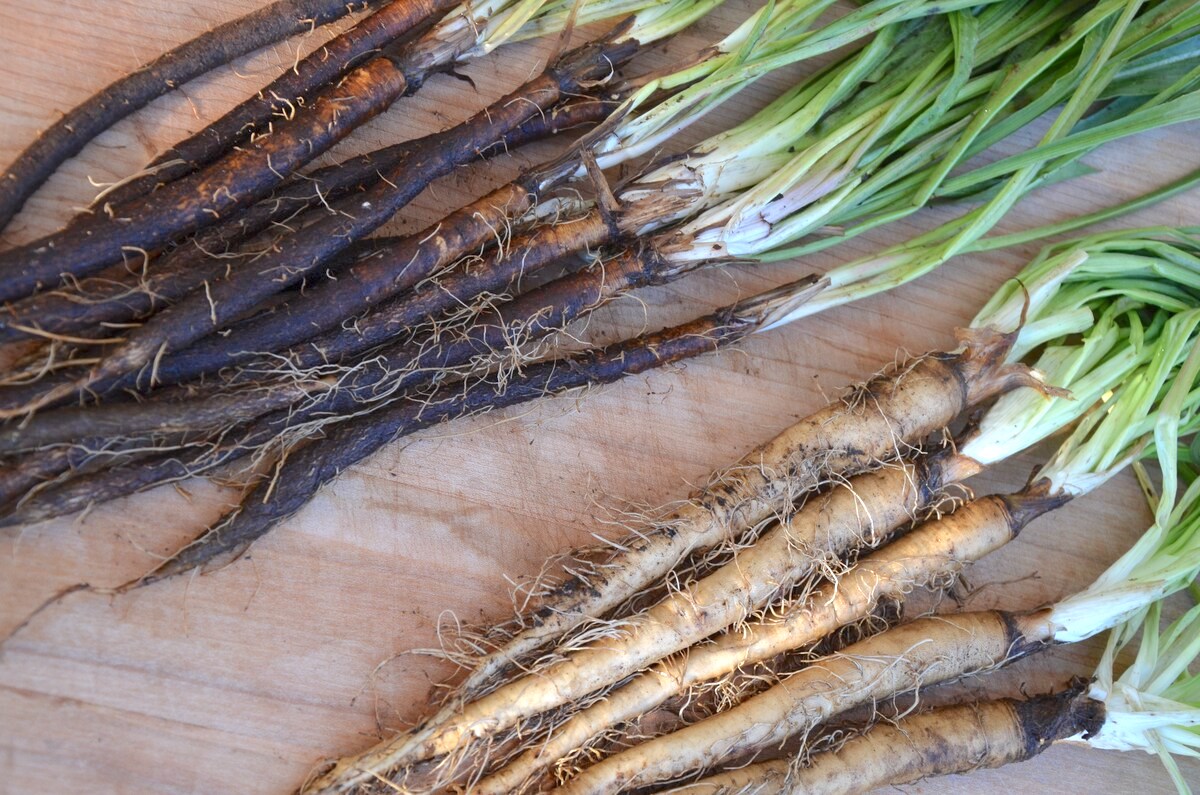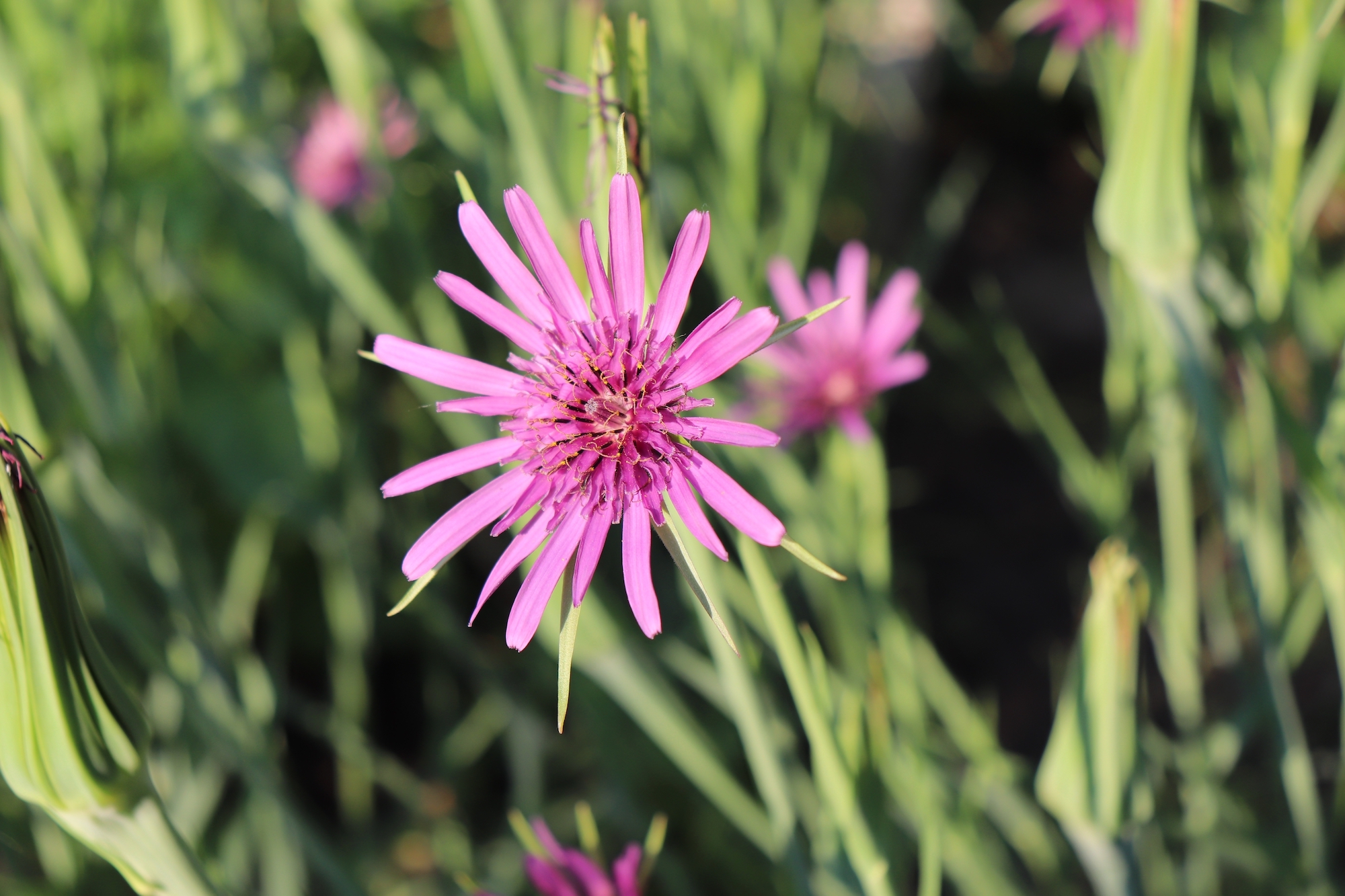
Planting, Growing, and Harvesting Salsify
The Almanac Garden Planner - Use It Free for 7 Days!
Plan your 2025 garden with our award-winning Garden Planner.
Types
Pay attention to the botanical name. Tragopogon porrifolius, also known as purple or common salsify, is what you want. Tragopogon dubius, also known as yellow or western salsify, is an invasive species in many areas.
A similar plant is Scorzonera (Scorzonera hispanica), also known as black salsify or Spanish salsify. Black on the outside and white on the inside, Scorzonera has smaller, skinner roots. Interestingly, even though it’s often called salsify, the plants are technically unrelated.

Here are a few excellent varieties to start from seed:
- ‘Mammoth Sandwich Island’ has large roots, as the name implies. Tasty greens and delicious roots.
- ‘Hoffman’s Schwarze’ is a black salsify variety perfect for simmering in soups and stew. It’s a perennial in zone 5 and warmer.
- ‘Fiore Blu’ is a medium-sized root with a mild flavor—a reliable self-seeder for permaculture gardens.
Cooking Notes
Eat and cook salsify like most root vegetables. Enjoy in soup and stews, boil, roast, or mash.

Be sure first to scrub the root under cold running water, peel with a sharp knife and place in water with a little lemon juice.
We like to simmer for 20 to 30 minutes (until soft, NOT mushy) and then sauté a little further in a little butter.
ADVERTISEMENT
Is the yellow type edible also? It grows wild here in MT
It is indeed! Here’s a link to some additional infornation from the Montana extension service: https://www.montana.edu/extension/invasiveplants/documents/publications/extension_publications/Western%20Salsify_revised%202017.pdf
Thank you, Joe Bills!
The common yellow salsify doesn't seem to be invasive in N.MI and I like seeing it in my fields. It's great fun watching the Finches jump on a seeded flower to feed while the stalk bounces.
I've long wanted to plant the purple variety and I think Andy Wilcox's article just convinced me to order seed for next season.











